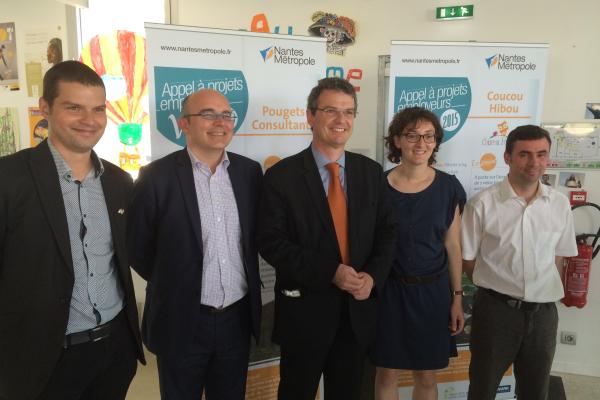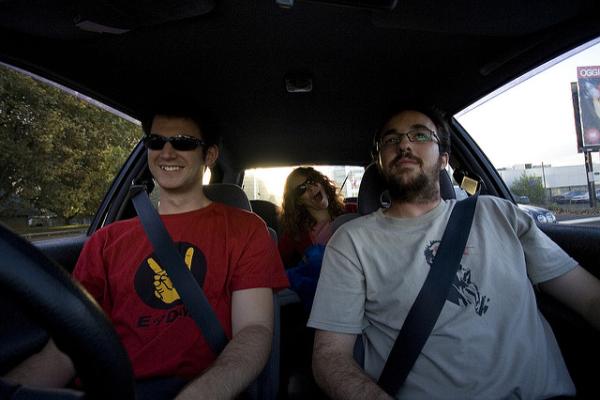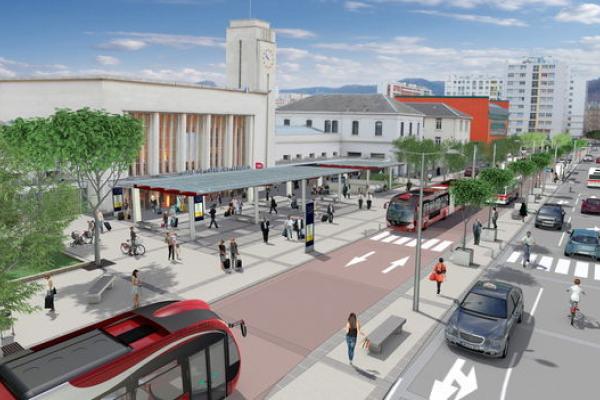Filter by
Case studies (150)
RSS
Prato’s Sustainable Urban Mobility Plan (SUMP) was the first to be approved in Tuscany and one of the first in Italy. Drawn up with the technical support of TRT Trasporti e Territorio, the SUMP was developed in partnership with citizens, local authorities and stakeholders.

When selecting the measures to be included in its SUMP, Budapest's transport operator, Budapesti Közlekedési Központ (BKK), tested out a number of new approaches in the processes involved in making the decisions. Various parties were consulted at national and international level

The public transport operator of German city Oberhausen (Stadtwerke Oberhausen) is taking part in the H2020 project ELIPTIC (Electrification of public transport in cities) which aims to show how costs and energy can be saved by electrifying public transport and optimising the existing infrastructure

Budapest SUMP, the Balázs Mór Plan, sets the mobility priorities for the years to come in the Hungarian Capital. The mobility of people is at the core of the plan. Budapest SUMP stood out at the last EU SUMP Award competition for making the strategy for the transport of goods crucial to their plan

The city of Stockholm has designed a strategy for freight which fits in the overall sustainable urban mobility planning strategy of the Swedish capital. The good integration of urban freight in the transport strategy made Stockholm qualify as one of the three finalists for the 5th EU SUMP Award

In 2016, the Brussels-Capital Region began the preparation of its third Sustainable Urban Mobility Plan (SUMP) in which freight will be the object of a particular attention. The Brussels-Capital Region aims at making the metropolitan area a model of efficient and innovative urban distribution.

In March 2016, Malmö city council adopted its first Sustainable Urban Mobility Plan (SUMP), a crucial document that takes a holistic approach to the link between urban development and sustainable transport based on economic, social and environmental sustainability.

The Czech city of Brno started developing its Sustainable Urban Mobility Plan (SUMP) in January 2014, when there were no national guidelines for planning authorities to follow.

As one of France’s most attractive cities, Toulouse has seen an increase of 200 000 inhabitants over the last 10 years, taking the populous to 1.2 million. With this in mind, there are expected to be 500 000 additional daily journeys in the next 10 years.

Taxistop is the Belgian partner in the CHUMS project. Under the motto ‘doing more with less’, Taxistop keeps developing new services which allow for the optimisation of use of personal goods. The promotion of carpool has been their core business for over 40 years

Vienna’s urban mobility plan is a reflection of the change from transport planning as a primarily technical logistical task to mobility as an interdisciplinary challenge to society. It evolved between the autumn of 2013 and 2014 adhering to the standards of the Sustainable Urban Mobility Plan (SUMP)

While much of the international attention on China’s development focuses on megacities, it is the many smaller, rapidly growing ‘mid-sized’ cities like Yichang that reflect the true scale of change in the country and where markets, and development, are on the rise.

In the last 30 years, one of the main objectives of the Municipality of Perugia’s vision for mobility has been to find all possible solutions to divert traffic flows from the city centre to suburban areas in order to improve life quality and preserve the cultural heritage of Perugia.

The Netherlands is well known for its cycling culture. But there was previously little objective and quantified information about cycling patterns. However, in autumn 2015, the Dutch Cyclists’ Union helped organise a national monitoring week

Nantes Métropole is involved in the Bike2Work project (2014-2017), whose objective is to promote commuting trips by bike by raising simultaneous awareness among employees and employers.

Implementation of the CHUMS measures started in the industrial area of Craiova West following a history of carpooling projects that have been implemented in collaboration with RAT Craiova (local transportation company).

With about 3.5 m travellers passing through the railway station in Clermont-Ferrand in central France, it is undoubtedly the city’s most important transport hub. The city decided, however, that the improvement of its connections with other forms of transport was essential.

Walking is beneficial on many fronts. It is healthy, saves money and, by people choosing to use their feet rather than motorised transport, lowers emissions. In Porto over recent years, people have moved from the city centre to the suburbs, a change which has also altered their travel behaviour.

Four hundred committed car users in Halmstad, Sweden, got the opportunity to borrow an electric bike for a period of time during 2014 and 2015 through the municipality. Together, they cycled more than 180 000 km, and helped the city to avoid a lot of emissions, noise and traffic jams.

The traffic and urban planning approach in North Rhine-Westphalia, which has been orientated towards car use throughout the last decades, has reached its limits. New mobility solutions and strategies are required to promote economic development and improve quality of life
